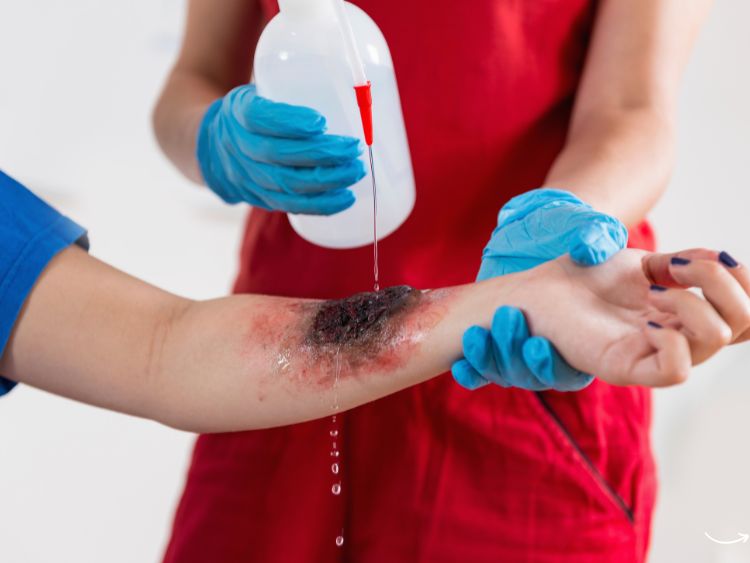When it comes to emergency preparedness, having a well-stocked first aid kit is non-negotiable. Whether you’re at home, in the office, or out in the wilderness, being ready for the unexpected can make all the difference. And among the various tools and supplies in your kit, first aid tape stands out as one of the most versatile and indispensable items. But what exactly makes first aid tape so essential, and how can you use it effectively?
In this comprehensive guide, we’ll delve into the world of first aid tape, exploring its different types, various applications, and the best practices for using it. By the end of this article, you’ll not only appreciate the significance of this humble tool but also be equipped with the knowledge to make the most out of it in any emergency situation.
What is First Aid Tape?
First aid tape, also known as medical tape, is an adhesive tape used in first aid and medical situations to secure bandages, dressings, and other medical devices to the skin. It’s designed to adhere securely while being gentle on the skin, making it ideal for prolonged use. But why is this tape so crucial in first aid?
Types of First Aid Tape
Not all first aid tapes are created equal. Depending on the situation and the patient’s needs, different types of tapes are available:
- Cloth Tape:
- Made of fabric, this type of tape is strong and durable.
- It’s perfect for securing bulky dressings or splints.
- The breathable material makes it comfortable for extended wear.
- Paper Tape:
- Lightweight and hypoallergenic, paper tape is ideal for sensitive skin.
- It’s easy to tear by hand, making it convenient for quick applications.
- Often used in hospitals for securing dressings on delicate skin areas.
- Elastic Tape:
- This tape stretches with movement, offering flexibility and comfort.
- It’s commonly used in sports to secure bandages or wraps on joints.
- Provides support while allowing a range of motion.
- Silicone Tape:
- Designed for patients with extremely sensitive skin, silicone tape is gentle and reusable.
- It doesn’t leave residue, making it perfect for repeated applications.
- Often used for securing dressings on delicate or healing wounds.
- Waterproof Tape:
- Made to withstand exposure to water, this tape is perfect for securing dressings that need to stay dry.
- Ideal for use in damp environments or for patients who need to shower with a dressing in place.
Applications of First Aid Tape
First aid tape is more than just an adhesive; it’s a multifunctional tool in emergency care. Here’s how you can use it in various situations:
Securing Dressings and Bandages
The primary use of first aid tape is to secure dressings and bandages. Whether you’re dealing with a minor cut or a more serious wound, keeping the dressing in place is crucial to protect the area from infection and promote healing.
- How to Apply:
- Clean and dry the area around the wound.
- Place the dressing over the wound.
- Cut the appropriate length of tape.
- Secure the dressing by placing the tape along the edges, ensuring it’s tight but not restrictive.
Splinting and Immobilization
In cases of sprains, strains, or fractures, first aid tape can be used to secure splints or immobilize the injured area until professional medical help is available.
- How to Apply:
- Align the splint along the injured limb.
- Use the tape to secure the splint in place, wrapping it around the limb snugly.
- Ensure the tape doesn’t cut off circulation or cause discomfort.
Blister Prevention and Care
For hikers, runners, and athletes, blisters are a common nuisance. First aid tape can prevent blisters by reducing friction or protect an existing blister from worsening.
- How to Apply:
- Apply a small piece of tape over the area prone to blistering before starting your activity.
- If a blister has already formed, place a dressing over it and secure it with tape.
Wound Closure
In some cases, first aid tape can be used to close small wounds or hold the edges of a cut together before getting stitches.
- How to Apply:
- Clean the wound thoroughly.
- Use small strips of tape to pull the edges of the wound together.
- Place the strips perpendicular to the cut, leaving space between each strip for drainage.
Creating Slings and Straps
First aid tape is handy for creating temporary slings or securing a limb in place if a more formal solution isn’t available.
- How to Apply:
- Fold a piece of cloth or use a bandage as the base of the sling.
- Secure the ends with tape to create a loop.
- Adjust the sling so it’s comfortable and provides adequate support.
Tips for Using First Aid Tape Effectively
To get the most out of your first aid tape, keep these tips in mind:
- Choose the Right Tape: Match the tape type to the patient’s needs and the situation.
- Prep the Skin: Clean and dry the skin before applying the tape to ensure better adhesion.
- Avoid Over-Tightening: Secure the tape snugly, but not so tight that it cuts off circulation.
- Test for Sensitivity: Before applying tape, especially on sensitive skin, test a small piece to avoid allergic reactions.
- Replace Regularly: If the tape starts to peel or becomes dirty, replace it to maintain hygiene.
FAQs About First Aid Tape
Q: Can first aid tape be used directly on wounds?
A: No, first aid tape should not be applied directly to wounds. It’s meant to secure dressings or bandages over a wound, not to cover the wound itself.
Q: How long can first aid tape be left on the skin?
A: It depends on the type of tape and the skin’s sensitivity. Generally, it’s best to change the tape every 24 to 48 hours or if it starts to loosen.
Q: Is first aid tape waterproof?
A: Some types of first aid tape, like waterproof tape, are designed to withstand moisture, but not all tapes are waterproof. It’s important to choose the right type based on the situation.
Q: Can I use regular tape instead of first aid tape?
A: Regular tape may not be as gentle on the skin and could cause irritation or leave residue. First aid tape is specifically designed for medical use, so it’s the safer choice.
Q: How do I remove first aid tape without causing pain?
A: Gently peel the tape back while holding the skin down to minimize discomfort. You can also use an adhesive remover if the tape is particularly sticky.
Summary
First aid tape is a crucial component of any emergency kit, offering a wide range of applications from securing dressings to immobilizing injuries. By understanding the different types of tape and how to use them effectively, you can ensure that you’re always prepared for whatever comes your way. Remember to choose the right tape for the job, prep the skin properly, and follow best practices for application and removal. With these tips in mind, you’ll be ready to handle any minor medical emergency with confidence.
Authoritative Links
- CDC Wound Care Guidelines: www.cdc.gov/woundcare
- Mayo Clinic First Aid Tips: www.mayoclinic.org/first-aid
- Red Cross First Aid Manual: www.redcross.org/first-aid-manual
This article should provide readers with a thorough understanding of first aid tape, how to use it, and why it’s an essential tool in emergency care.







